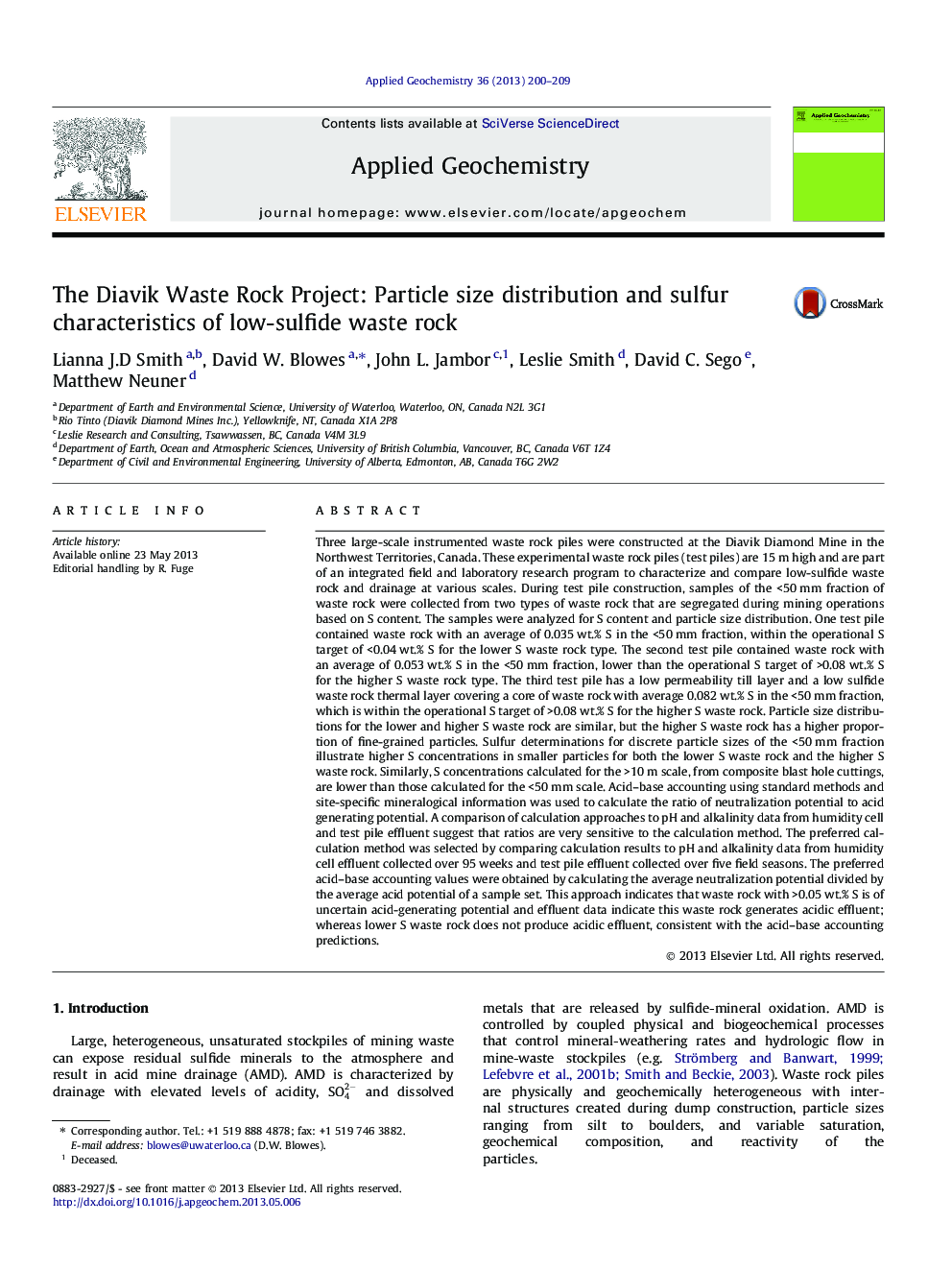| کد مقاله | کد نشریه | سال انتشار | مقاله انگلیسی | نسخه تمام متن |
|---|---|---|---|---|
| 4435996 | 1620255 | 2013 | 10 صفحه PDF | دانلود رایگان |

• Three test-scale waste rock piles were analyzed for sulfur content and particle size distribution.
• Sulfur content ranged from an average of 0.035 wt.% S to 0.082 wt.% S.
• Higher sulfur waste rock had a higher proportion of fine-grained particles.
• Smaller particles have higher sulfur concentrations.
• Acid–base accounting suggests that the waste rock is acid-generating.
Three large-scale instrumented waste rock piles were constructed at the Diavik Diamond Mine in the Northwest Territories, Canada. These experimental waste rock piles (test piles) are 15 m high and are part of an integrated field and laboratory research program to characterize and compare low-sulfide waste rock and drainage at various scales. During test pile construction, samples of the <50 mm fraction of waste rock were collected from two types of waste rock that are segregated during mining operations based on S content. The samples were analyzed for S content and particle size distribution. One test pile contained waste rock with an average of 0.035 wt.% S in the <50 mm fraction, within the operational S target of <0.04 wt.% S for the lower S waste rock type. The second test pile contained waste rock with an average of 0.053 wt.% S in the <50 mm fraction, lower than the operational S target of >0.08 wt.% S for the higher S waste rock type. The third test pile has a low permeability till layer and a low sulfide waste rock thermal layer covering a core of waste rock with average 0.082 wt.% S in the <50 mm fraction, which is within the operational S target of >0.08 wt.% S for the higher S waste rock. Particle size distributions for the lower and higher S waste rock are similar, but the higher S waste rock has a higher proportion of fine-grained particles. Sulfur determinations for discrete particle sizes of the <50 mm fraction illustrate higher S concentrations in smaller particles for both the lower S waste rock and the higher S waste rock. Similarly, S concentrations calculated for the >10 m scale, from composite blast hole cuttings, are lower than those calculated for the <50 mm scale. Acid–base accounting using standard methods and site-specific mineralogical information was used to calculate the ratio of neutralization potential to acid generating potential. A comparison of calculation approaches to pH and alkalinity data from humidity cell and test pile effluent suggest that ratios are very sensitive to the calculation method. The preferred calculation method was selected by comparing calculation results to pH and alkalinity data from humidity cell effluent collected over 95 weeks and test pile effluent collected over five field seasons. The preferred acid–base accounting values were obtained by calculating the average neutralization potential divided by the average acid potential of a sample set. This approach indicates that waste rock with >0.05 wt.% S is of uncertain acid-generating potential and effluent data indicate this waste rock generates acidic effluent; whereas lower S waste rock does not produce acidic effluent, consistent with the acid–base accounting predictions.
Journal: Applied Geochemistry - Volume 36, September 2013, Pages 200–209